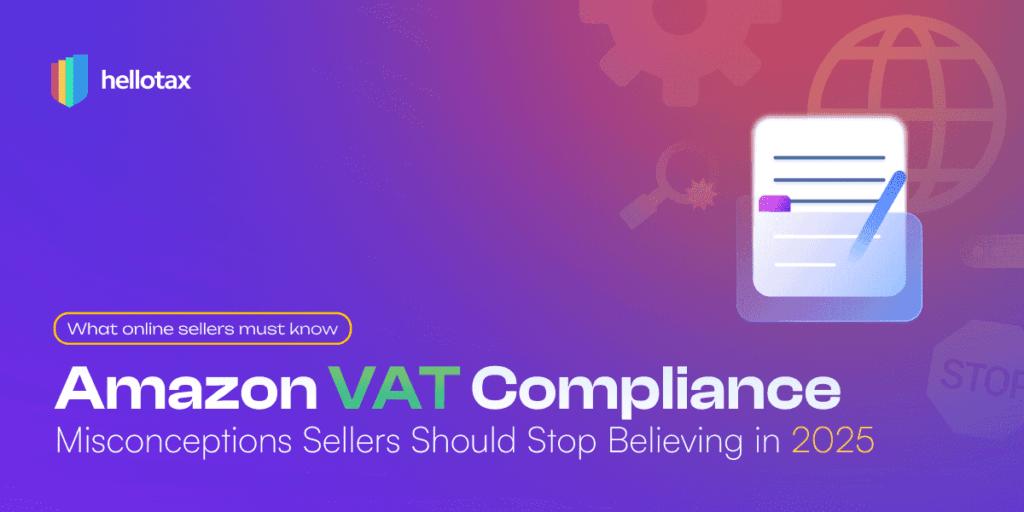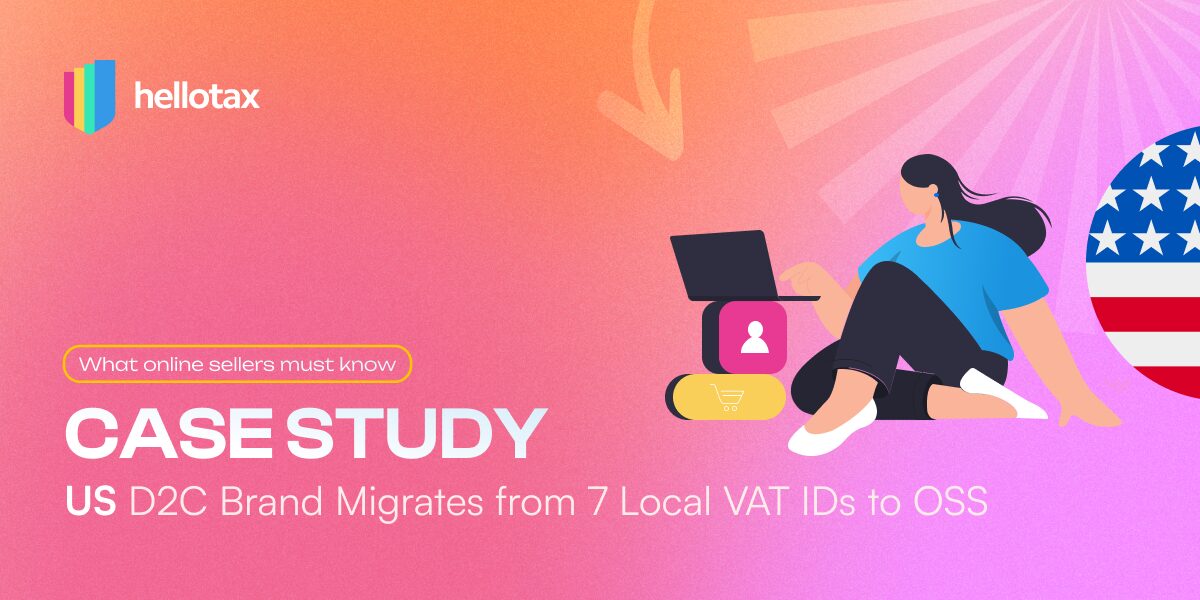Introduction: Why Misconceptions Are Riskier Than Simple Mistakes
As an Amazon seller operating across Europe, understanding VAT isn’t just a matter of avoiding penalties—it’s essential for maintaining smooth operations and long-term success. While common VAT mistakes can often be corrected, misconceptions are more dangerous: they lead sellers to operate under false assumptions, sometimes for months or even years.
Brenda Varela
Last Updated on 28 October 2025

In 2025, Amazon VAT compliance requires more than relying on your marketplace. With the EU moving toward stricter digital reporting, real-time invoicing, and harmonised systems, sellers must stay informed and proactive. If you’re still relying on outdated beliefs or marketplace myths, it’s time to separate fact from fiction.
🧠 1. “My Marketplace Calculates VAT—So I Don’t Need to Understand It”
The reality:
Marketplaces like Amazon may collect and remit VAT for some transactions (especially B2C sales within the EU), but not for everything. For example:
If you store goods in another EU country via FBA, you still need a local VAT registration.
B2B transactions, or certain cross-border situations, may require you to issue your own valid VAT invoices.
You are still responsible for filing VAT returns and maintaining records, even if VAT is “collected” on your behalf.
✅ Takeaway: Marketplace support ≠ full compliance. Sellers must understand when and where VAT obligations apply to them directly.
📄 2. “EU E-invoicing Only Affects B2B Sellers”
The reality:
With the rollout of e-invoicing mandates and real-time reporting systems (like ViDA), all sellers, including those selling to consumers, need to prepare. Some countries already require structured e-invoices for B2C sales (e.g., Italy), and more are following.
Even if you’re not directly affected yet, ViDA reforms aim to standardise digital reporting across the EU by 2028. B2C exemptions are narrowing, and national systems increasingly require integration with certified invoice tools or Peppol networks.
✅ Takeaway: E-invoicing isn’t just a B2B issue—prepare now to avoid future disruptions and ensure your invoice systems are adaptable.
🚚 3. “I Can Use Distance Selling Thresholds to Delay VAT Registration”
The reality:
Since the 2021 EU VAT reforms, individual country thresholds were replaced with a €10,000 EU-wide threshold for cross-border B2C sales. If you exceed this—across all EU countries combined—you’re required to:
Register for the One-Stop Shop (OSS), or
Register individually in each country where you ship goods.
This myth persists especially among Amazon and Shopify sellers who believe thresholds still apply country by country.
✅ Takeaway: The old distance selling rules no longer apply. Once you exceed €10,000 EU-wide, VAT compliance becomes a priority—immediately.
💶 4. “I’m Safe if I Price VAT-Inclusive on Product Pages”
The reality:
Listing prices that “include VAT” is not enough to be compliant. Tax authorities look at:
Whether valid VAT invoices are issued correctly.
Whether the correct VAT rate is applied based on the customer’s location.
Whether you’re registered in the right country based on inventory location or fulfilment setup.
VAT-inclusive pricing is a good user experience—but it doesn’t replace legal documentation or reporting requirements.
✅ Takeaway: Transparent pricing ≠ VAT compliance. You need correct invoicing, registration, and reporting to match.

Book a free consultation
Our VAT experts are happy to help you. Book a free consultation today!
🔍 How to Spot These Misconceptions in Your Business
You may be operating under one or more of these myths without realising it. Ask yourself:
Do I know exactly where my goods are stored?
Have I exceeded the €10,000 OSS threshold?
Are my invoices structured and valid in every EU country?
Am I relying solely on Amazon for VAT reporting?
If any of these are unclear, it’s time for a compliance check.
If you’re also wondering about the more practical, day-to-day VAT errors that online sellers make—such as incorrect invoicing, missing return deadlines, or overlooking marketplace-specific rules—be sure to check out our related article on the common VAT mistakes EU sellers make. It’s a helpful companion to this post, focusing on the operational side of compliance.
🛠️ How to Correct VAT Misconceptions and Stay Compliant
Here are practical steps sellers can take today:
Monitor inventory location and cross-border sales using automated tools.
Use OSS or IOSS where applicable, and don’t delay local VAT registrations if needed.
Issue valid VAT invoices using compliant formats, including Peppol when required.
Stay updated on e-invoicing mandates in each EU country.
Automate your VAT filings and thresholds to avoid manual errors and outdated assumptions.
💡 hellotax makes all of this easier with:
Real-time threshold tracking
Automated OSS and local VAT filings
Country-specific invoice support
Fiscal representation where required
✅ Conclusion: Trade with Confidence, Not Confusion
VAT myths are easy to believe—especially when platforms seem to take care of everything. But confusion around registration, invoicing, and reporting leads to costly mistakes. By understanding where responsibilities truly lie, sellers can avoid penalties, delays, and compliance issues.
With hellotax, you don’t have to figure it out alone. Our platform helps Amazon and online sellers across Europe stay compliant, automatically—so you can focus on growing your business. Contact us now for a free consultation.





I couldn’t agree more with the point on real-time invoicing. The EU’s move to stricter digital reporting is a game-changer, and it’s crucial that sellers educate themselves rather than relying on outdated myths about VAT compliance.
Thanks for your comment — we completely agree! The shift toward real-time invoicing and digital reporting is reshaping how VAT compliance works across the EU. It’s more important than ever for online sellers to stay informed and adapt to these changes early.
If you’re interested in how these new rules will affect sellers, check out our detailed article on the EU VAT in the Digital Age (ViDA) initiative: https://hellotax.com/blog/eu-vat-in-digital-age-vida/ — it covers everything you need to know to stay ahead.
Thanks again for reading and sharing your insight! 👏